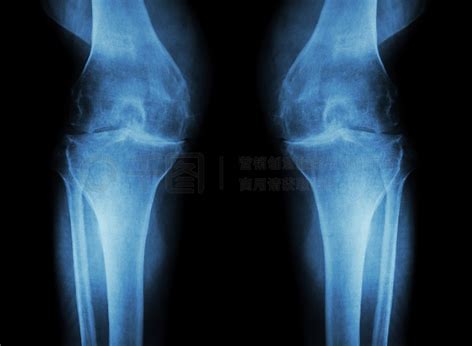dislocation, also known in Chinese medicine as subluxation, dislocation, bone out, desosseous, disjointed joint, joint loss, etc.. Dislocation occurs when the articular surfaces of the bones that make up a joint are out of their normal relationship with each other, causing pain and dysfunction. Dislocation occurs mostly in joints with greater range of motion and more frequent activities. Among the joints in the whole body, dislocation of shoulder, elbow, hip and temporomandibular joints are more common. The patients are mostly young men, the elderly and children are less common. In children, dislocation is often combined with epiphyseal separation.
The place where bones meet each other is called a joint. Although there are various types of joints in the human body, their basic structure consists of three parts: the articular surface, the joint capsule, and the joint cavity.
1. Articular surface: The smooth surface where bones come into contact with each other, covered by a layer of cartilage, i.e. articular cartilage. It can make the non-smooth joint surface become smooth and reduce the friction of movement.
2. joint capsule: the joint capsule is attached to the bone surface of the periphery of the articular surface of the connective tissue, can secrete lubricating fluid, lubrication and nutrition of the articular cartilage.
3. articular cavity: the joint cavity for the articular cartilage and the joint capsule for the confined between the narrow space, within the appropriate amount of lubricating fluid.

- Causes of subluxation:
The majority of joint dislocations are caused by direct or indirect violence, with indirect violence being the most common, and in some cases by internal forces from strong muscle contractions or pathologic factors. There are also dislocations caused by congenital developmental defects, called congenital dislocations. For example, congenital hip dislocation in children.
The main pathological change of joint dislocation is that the correspondence of the articular surfaces of the ends of the bones is out of the normal range, which is often accompanied by tearing or laxity of the joint capsule, and damage to the ligaments tendons and muscles around the joints causing rupture of blood vessels and rapid formation of hematoma inside and outside the joint capsule. Sometimes, the violence can be too large, resulting in fractures of the articular surface of the bone end and the edge of the joint, as well as vascular and nerve injuries. If the dislocation time is long, due to the hematoma inside and outside the joint capsule, scar tissue fills in the joint cavity, so that the dislocated joint and the surrounding fascia form adhesion, which may cause difficulties in reset, or even make it difficult to reset successfully.
- clinical manifestation:
1. General symptoms:
(1) pain and pressure;
(2) swelling: injury to the joint capsule and surrounding fascia, resulting in bleeding filling the inside and outside of the joint capsule and forming a hematoma.
(3) Dysfunction: dislocation leads to abnormal joint structure and spasm of surrounding fascial tissues due to pain.
2、Specific signs:
(1) Deformity: the normal relationship between the dislocated joint and the injured limb is changed, and deformity occurs. For example, the square shoulder deformity of shoulder dislocation.
(2) Empty glenoid: the original bone end located in the joint cavity is detached from the abnormal so-called, resulting in empty joint cavity.
(3) Elastic fixation: after dislocation, the tense contraction of the tensile and fleshy tissues around the joints that have not been torn will keep the dislocated limb in a special position, and when the joint is passively moved, it can still do slight movement, but there is elastic resistance, and the injured limb will return to its original special position after the activity stops.
(4) Limb indirect length change: after dislocation, the indirect length of the limb is shortened or increased. For example, in posterior dislocation of the hip joint, the indirect length of the injured limb is shorter than that of the healthy side; in anterior dislocation, it is just the opposite, longer than that of the healthy side.
- How it should be treated:
1. Resuscitation in acute cases;
2. Early and timely correct reset: mainly by manipulation. Handle gently, accurately, grasp the essentials, and strive for one-time success; the basic operation principle of manipulation and repositioning:
a. The running route of joint dislocation is reversed to run that is the running route of repositioning.
b. It should be carried out under the principle of painlessness, and muscle relaxation.
c. It should follow the principle of repositioning with traction and anti-traction.
Signs of successful repositioning:
a.Passive movement of the joint returns to normal.
b. Bony signs are restored.
c. X-ray examination confirms that the joint has been repositioned.
d. Bony signs are restored.
e. The joint has been repositioned.
Indications for surgery:
a. Combined intra-articular fracture, unsatisfactory fracture repositioning and instability after manipulation.
b. Soft tissue embedded in the joint cavity, failure of manipulation.
c. Stale dislocation, failure of manipulation.
3. Appropriate immobilization and rest: generally immobilized for 2-3 weeks.
4. Guidance on early functional exercise. After the functional exercise is reset and fixed, all unfixed joints should start to do active activities, and the adjacent muscles should also do active contraction activities, in order to improve the local blood circulation, promote the repair of damaged tissues, and prevent the occurrence of atrophy and osteoporosis of sinew and flesh tissues. After the fixation is lifted, the injured joints can be actively and gradually moved, and massage therapy can be carried out at the same time, so as to restore the function of joint movement as soon as possible.



